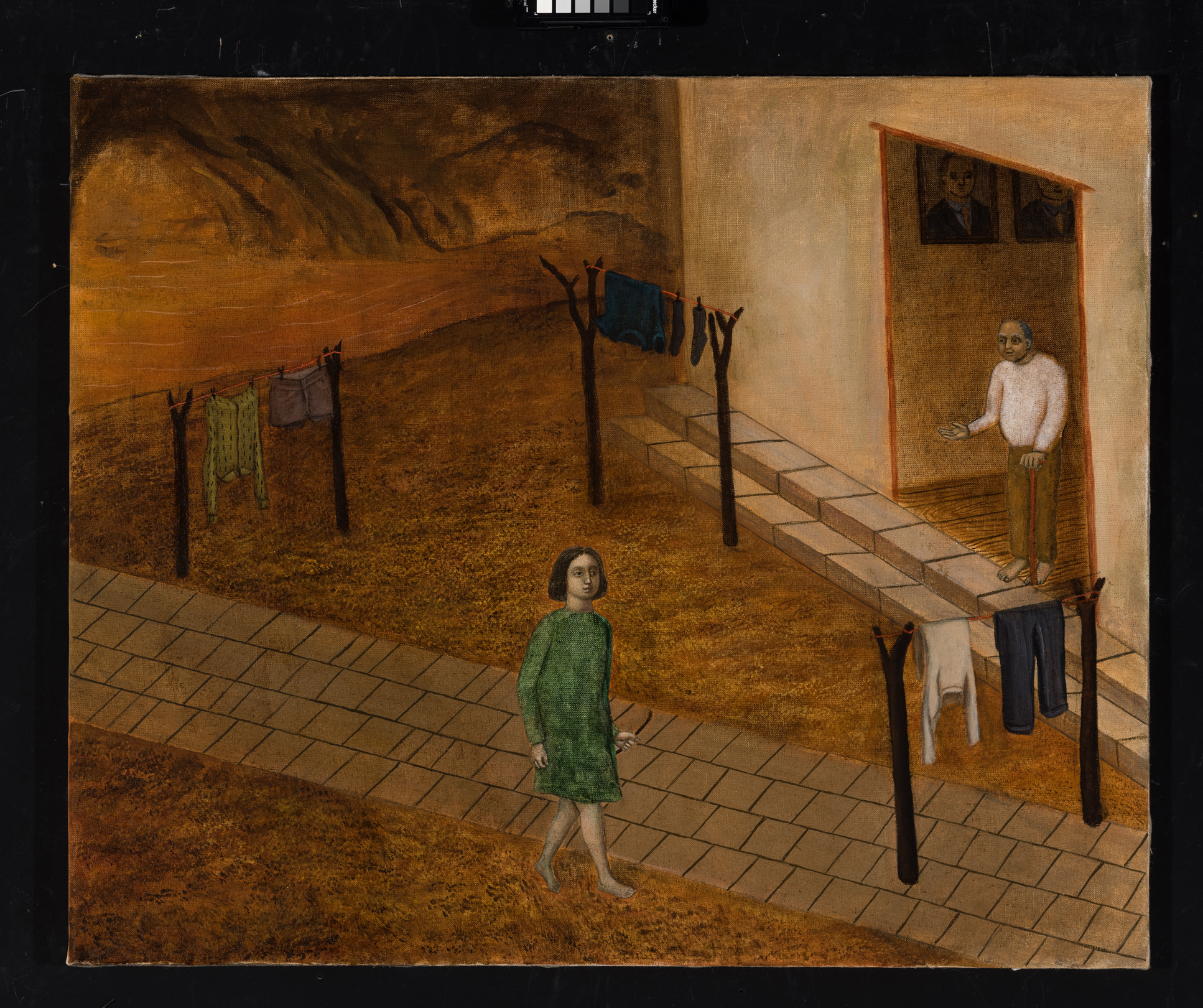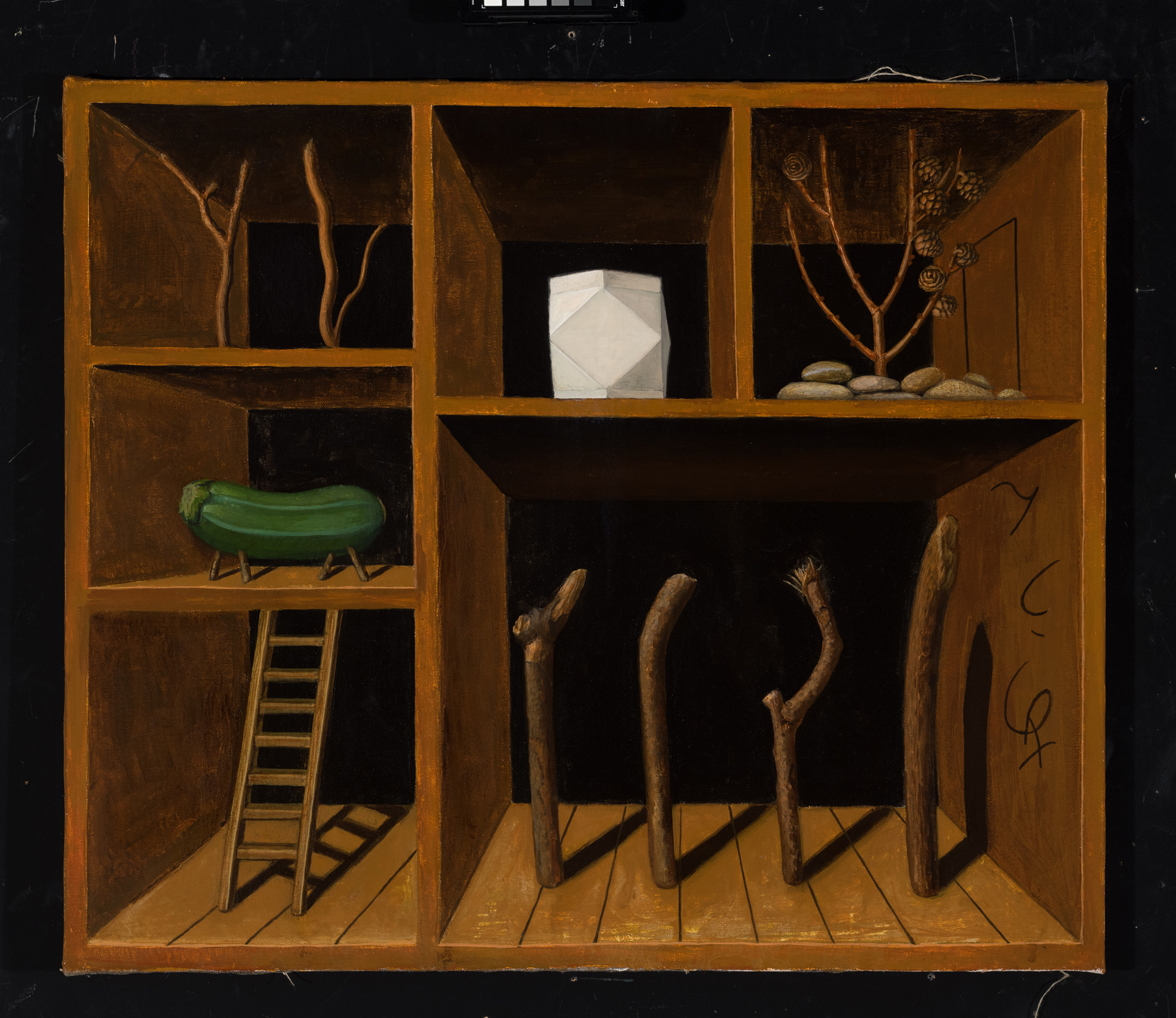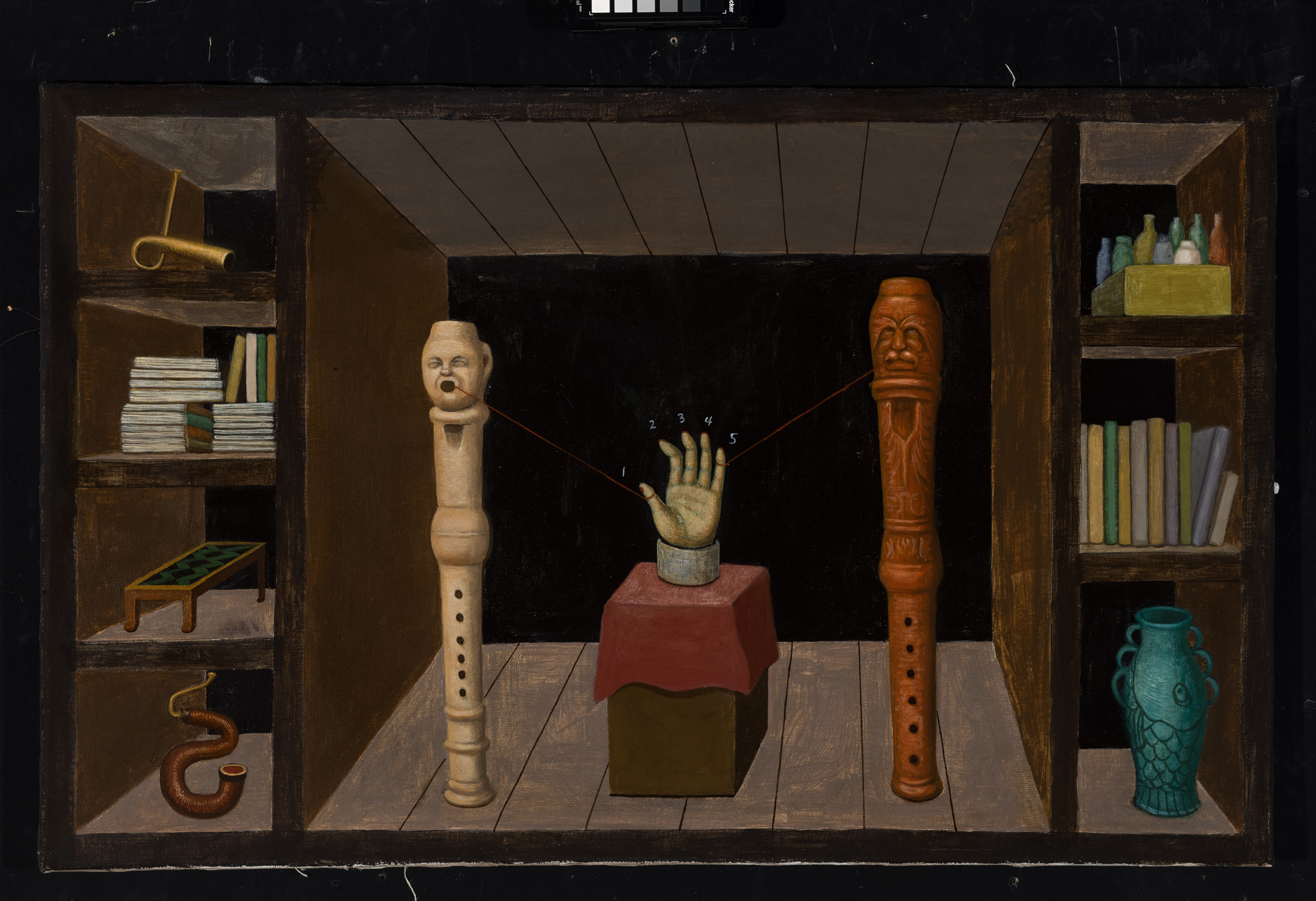Moemi Yamamoto↓
Gallery
Studies
| 2019–2022 | Painting 3, AVU (Josef Bolf, Jakub Hošek) |
| 2005–2011 | Vysoká škola uměleckoprůmyslová v Tohoku, Japonsko |
About the work
Images as a Means of Meditation
I would like to express a certain feeling. It is like staring absently at a river flow. Or when you look at something and, suddenly, as if all the original meanings vanished and a thing began to appear as it is. Or the feeling in dreams when you digress from your main goal and keep playing, or go elsewhere ignoring time. It can be said that this feeling was expressed in the Surrealists’ attempts that sought to name the world of the unconscious, or in the attempts of Magical Realism that sought to reveal the sacred authentic time hidden beneath everyday life. I first experienced this when looking at paintings by Giorgio de Chirico. The reason why they inspired me so much, although created about a century ago, was probably because We have not yet found anything that would be sacred and would substitute God after the period of secularization. We who live in a time when God is dying, are alienated from the world around us and vainly waste our everyday lives.
I had been aware of this feeling of alienation since I was ten. I was unable to see the world around as likeable; everything looked dull and gray. Therefore, when I first saw de Chirico’s painting, it shocked me that there was such a way of seeing the world.
My motivation in art is to create a picture of a world that would make it more likeable. Many monastic orders pursued painting; art used to be a means of connecting reality and the sacred. I think it could be the same today. I think that one of the great roles of art is seeking how to share something inexplicable, something sacred with people. I do not profess a particular religion but, as an old Chinese monk, crave a job when I would meditate on something and then save the feeling of it in a painting. The reason why my work is entitled Images as a Means of Meditation stems from my feeling that I want to create works of art like the old Chinese monk.
However, to store such a feeling in a painting is not something that can be done in a controlled manner. I try to find it by, for example, painting a few arbitrary motifs which subsequently inspire me and evoke some feeling in me. Then I add something to the picture. Or I record touching dreams so as not to forget the feeling. It may seem a bit paradoxical, but I guess I have a realistic way of viewing. Expressing discomfort or a deviation from reality allows me to create an expression of dream time that is close to reality. This time I manipulated the perspective, such as de Chirico in his canvases. For this purpose, I employed the methods found in the Japanese ukiyo-e and Central-European Gothic paintings from the first third of the 15th century.
I am not sure if my paintings, created as impractical and deviating from reality, can play a role in society. It may be a resistance to everything practical and advanced, or – since I employ the traditional, pre-modern Japanese painting method – a post-modern protest against Western cultural colonialism. However, my paintings primarily originate out of my own need and are for those who feel the same as I feel.
They are paintings as a means of meditation so that we can feel the world as likeable again, as we saw in our childhood.


